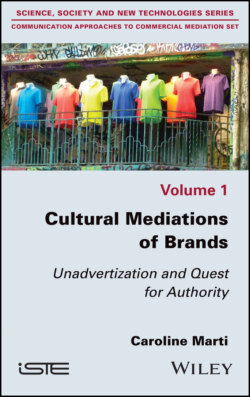Читать книгу Cultural Mediations of Brands - Caroline Marti - Страница 9
I.1. Cultural proposals and commercial mediation I.1.1. A strange mediation
ОглавлениеRodin’s The Thinker explodes onto the front page of the French newspaper, Le Monde1. The famous sculpture is represented with an IV drip in the arm. Below, a sentence comments: “What if a crisis was the worst time to sacrifice culture?” This is a communication from the E. Leclerc group that implicitly poses as a defender of culture.
This advertisement, published in December 2013, seems very far from the somewhat earlier November 2013 issue of Le Monde, referring to the decision of the Ministers of Economy and Consumer Affairs to take action against the distribution group for “imbalance” in its relationships with its suppliers2, a decision followed by the group’s condemnation in January 2014.
After having distinguished itself as an economic player involved in particularly tough negotiations, the E. Leclerc company soon became a brand that defended the common good of culture. The announcement was in line with E. Leclerc’s strategy, an entity concerned with positioning itself on the defense of low prices, which is both the objective and pretext for its practices. It illustrates the promise of access to culture for the greatest number of people, thanks to the prices charged by E. Leclerc in its “cultural spaces”. The brand, which in 2018 claimed to be “the second largest bookshop in France”, has since then consistently promoted its role as an intermediary for access to culture, going so far as to invest the new literary year, in 2016, with the creation of the Landerneau readers’ prize3.
Admittedly, the culture in question here corresponds to the commercial activity of the brand, but one can be struck by the position that the brand attributes to itself. By choosing to refer more broadly to “culture”, it goes beyond its role as a seller of products, books, CDs, films, etc. Indeed, it adopts a critical stance induced by the evocation of the “worst time” and expresses a political and societal point of view that is normally the prerogative of legal and mandated bodies for this purpose.
How does delivering products designed by cultural industries make it possible to take a look at culture? Certainly, there is a slippage, a classic figure of advertising rhetoric that would seem banal if the media insertion of the ad were different. The gap between the Le Monde audience and the nature of the targeting that could be expected from an advertisement really intended to attract guests to cultural spaces is due to the institutional objective of this communication. Its objectives are to challenge decision-makers and public authorities, with whom the brand is regularly in tension, but also to highlight the brand’s social mission. Culture is represented as sick and The Thinker as needing care. The image is captured, but the hyperbola deflates at the same time as it is expressed, the drip seeming unsuitable for a bronze statue.
This anecdotal detour into E. Leclerc makes it possible to point out a phenomenon that goes beyond the limited scope of this example: that of the propensity of brands to embrace fields beyond those normally given to them, in order to adopt a broader societal and social point of view. In his speech in Le Monde, E. Leclerc claims to be an actor capable of counteracting the effects of the crisis and ensuring that everyone’s cultural life is not affected. No matter how artificial the nature of this claim, what matters to me in this case lies neither in the commercial ambition, nor in the power relations with suppliers, nor in the interpellation of the public authorities on which E. Leclerc regularly exerts pressure, as in November 2013 with regard to VAT.
What seems to me to be major in this example is the expression attributed to a brand in the public space to affirm it as a social actor and, in particular, as a kind of cultural mediator here. Both a challenge to the authorities in power and diffuse traditional powers, and an ambitious position, this example testifies to a characteristic contemporary trait, since it seems so recurrent and large: brands are more and more linked to social life. Admittedly, while the cultural industries continue their dynamic of industrialization, non-cultural products are being culturalized (Bouquillion et al. 2013), but what I depict goes beyond that.
Far from limiting themselves to the functions assigned to them by theorists over time, which can be summarized by the functions of signaling, differentiation, and then symbolization of offers, brands seem to be becoming autonomous, far from the monolithism of a mission of strictly supporting transactions to take on new responsibilities. Regularly visiting brands for many years, thanks to my duties as a teacher-researcher at CELSA, has enabled me to observe a change in their communication, with the intense development of cultural proposals aimed at the target audience.
